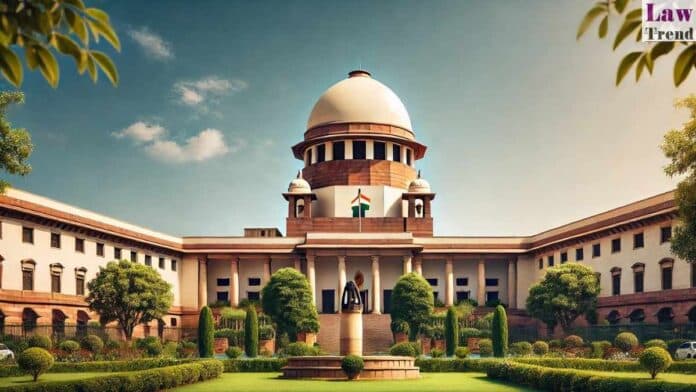The Supreme Court on Wednesday pulled up the governments of Punjab and Haryana over large-scale stubble burning contributing to hazardous air pollution in Delhi-NCR, directing both states to detail the action taken to control the situation.
A bench led by Chief Justice B.R. Gavai, and comprising Justices K. Vinod Chandran and N.V. Anjaria, took serious note of the deteriorating air quality and agreed to hear the matter further on November 17. “Let Punjab and Haryana governments respond on steps taken to control stubble burning,” the CJI said during the hearing.
At the outset, senior advocate Gopal Sankarnarayanan informed the court that the Graded Response Action Plan (GRAP) Stage III was already in force but air quality had crossed dangerous levels. “GRAP IV should be implemented. The AQI has crossed 450 at some places. There is drilling and excavation happening even outside a court here — that shouldn’t happen at least within these premises,” he said.

Responding to this, the CJI assured that action would be taken with regard to ongoing construction activity.
Senior advocate Aprajita Singh, assisting the bench as amicus curiae, said stubble burning in Punjab and Haryana had intensified despite clear judicial directions. Citing NASA satellite images, she said the fires were contributing massively to the worsening smog across Delhi-NCR. “The apex court’s orders are being flouted with impunity,” she told the bench, urging both states to respond to the alarming situation.
On November 3, the bench had directed the Commission for Air Quality Management (CAQM) to file an affidavit outlining preventive measures against worsening pollution levels. The case forms part of the long-standing M.C. Mehta matter concerning environmental protection in Delhi-NCR.
During that hearing, the amicus had pointed out that several air quality monitoring stations in Delhi were not functioning during the Diwali period. “Out of 37 monitoring stations, only nine were functioning continuously on Diwali day,” she said, warning that without proper monitoring, authorities cannot know when to implement GRAP measures.
The bench then directed CAQM to place a detailed affidavit specifying proposed actions to prevent the air quality from turning “severe.” Additional Solicitor General Aishwarya Bhati, appearing for the Centre, assured that the required report would be filed.
Earlier, on October 15, the same bench had permitted the sale and bursting of green firecrackers in Delhi-NCR during Diwali under restricted conditions. The court clarified that the relaxation was only on a “test case basis”, limited to a short period from October 18 to 20, and would be subject to close monitoring of the AQI.
The bench had also instructed the Central Pollution Control Board and the respective State Pollution Control Boards to monitor daily air quality and take samples from high-activity areas.
As the smog thickens and AQI levels remain in the “severe” zone, the top court’s fresh intervention places the onus on Punjab and Haryana to demonstrate what concrete steps they have taken to curb stubble burning — a major seasonal contributor to Delhi’s annual pollution crisis.







